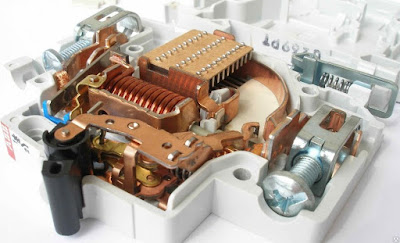This type of motor has a short-circuited rotor and is mainly used in the operation of machines and fans, and as for the types of construction shown in figure, their main characteristics are the following:
Motors with two independent windings. These motors have two speeds and are designed in such a way that each winding interacts internally with a different number of poles and depending on which winding is connected to the network, the motor will rotate with a different number of revolutions. In this type of motor usually both windings are connected by a connection to the star and the most frequent pole combinations are: 6/2, 6/4, 8/2, 8/6, 12/2 and 12/4.
Motors with one winding, with a connection Dahlander. These two-speed motors are designed with a conventional three-phase winding, but connected internally in such a way that depending on which external consumers are connected to the network, the motor will switch from one to another number of poles, but their ratio will always be 2 to 1; thus, the engine will have two rotary speeds, one twice the other. As shown in figure, the connection of the windings is made by a triangle or star for a lower speed and a double star for a higher one, the most frequent combinations of poles are: 4/2, 8/4 and 12/6.
Motors with winding of Dahlander and another independent winding. With this type of motor, three different speeds are achieved, two with a dalander connection winding and a third with an independent winding, the design of which has a different number of poles, different from the two polarities obtained from the first. The most commonly used connections are shown in figure 19.1, and the most common pole combinations are: 6/4/2, 8/4/2, 8/6/4, 12/4/2, 12/6/4, 12/8/4, 16/12/8 and 16/8/4.
Motors with two windings Alanlara. With this type of motor, four speeds are achieved, two from each winding, which will be designed for polarities different from each other, with the most commonly used combinations: 12/8/6/4 and 12/6/4/2.
The most used type of asynchronous three-phase motors with different speeds (we can say that almost the only one currently used) is a motor with a magnetic winding with a dalander connection, and this is why this motor will be described in detail. Figure shows the winding of a three-speed asynchronous motor with a dalander connection, which shows both internal connections and connections with a terminal block to the network, in two working positions. This motor is designed to operate with four poles when connected in a triangle and two poles when connected in a double star according to the U1 – V1 winding phase shown in the figure.















